This easy Buttermilk Substitute requires just two ingredients and comes together in seconds. No more running to the store in the middle of baking your favorite recipes! Recipe includes a how-to video.
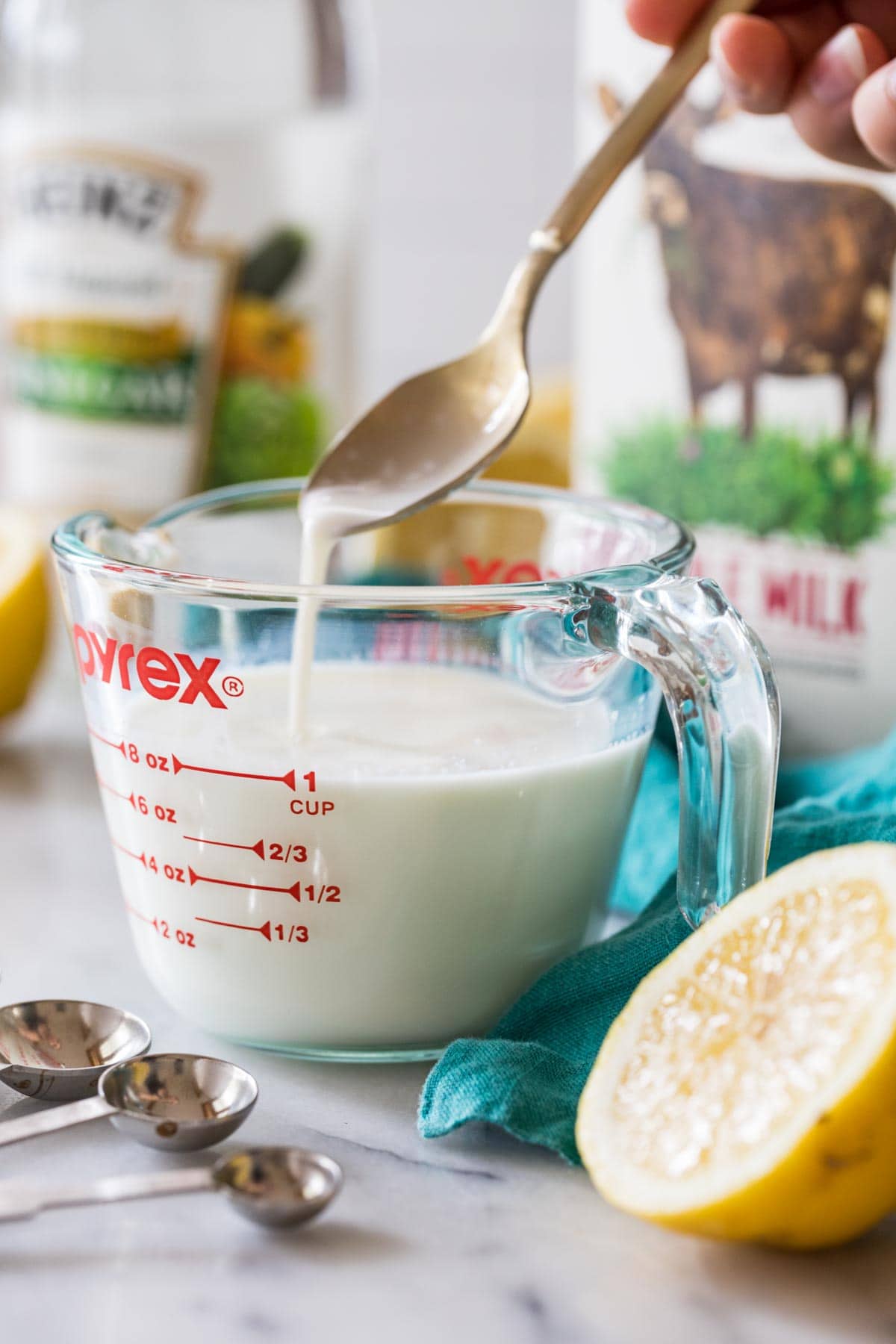
Quick & Easy Buttermilk Substitute
Have you ever been in the middle of prepping what will be a beautiful batch of waffles or pancakes and BAM–you realize you need buttermilk?! I don’t know about you, but I don’t keep a bottle in my fridge at all times, so when this happens, I’m left with two options: get in the car and drive to the store, or just make this easy buttermilk substitute. The choice is really an no-brainer.
While real, cultured buttermilk is honestly better than any substitute and will always yield the best taste, texture and flavor, when you’re in a pinch a substitute is better than nothing at all (and better than just regular milk–more on that below!) This “recipe” I’m sharing today is extremely simple and uses ingredients that, unlike the real thing, are almost always already in your kitchen.
What does buttermilk do?
- Imparts a rich, slightly tangy flavor.
- Can be a major factor in creating texture and rise (as you can see in my tall, fluffy banana muffins).
- Adds moisture, much like sour cream.
What You Need
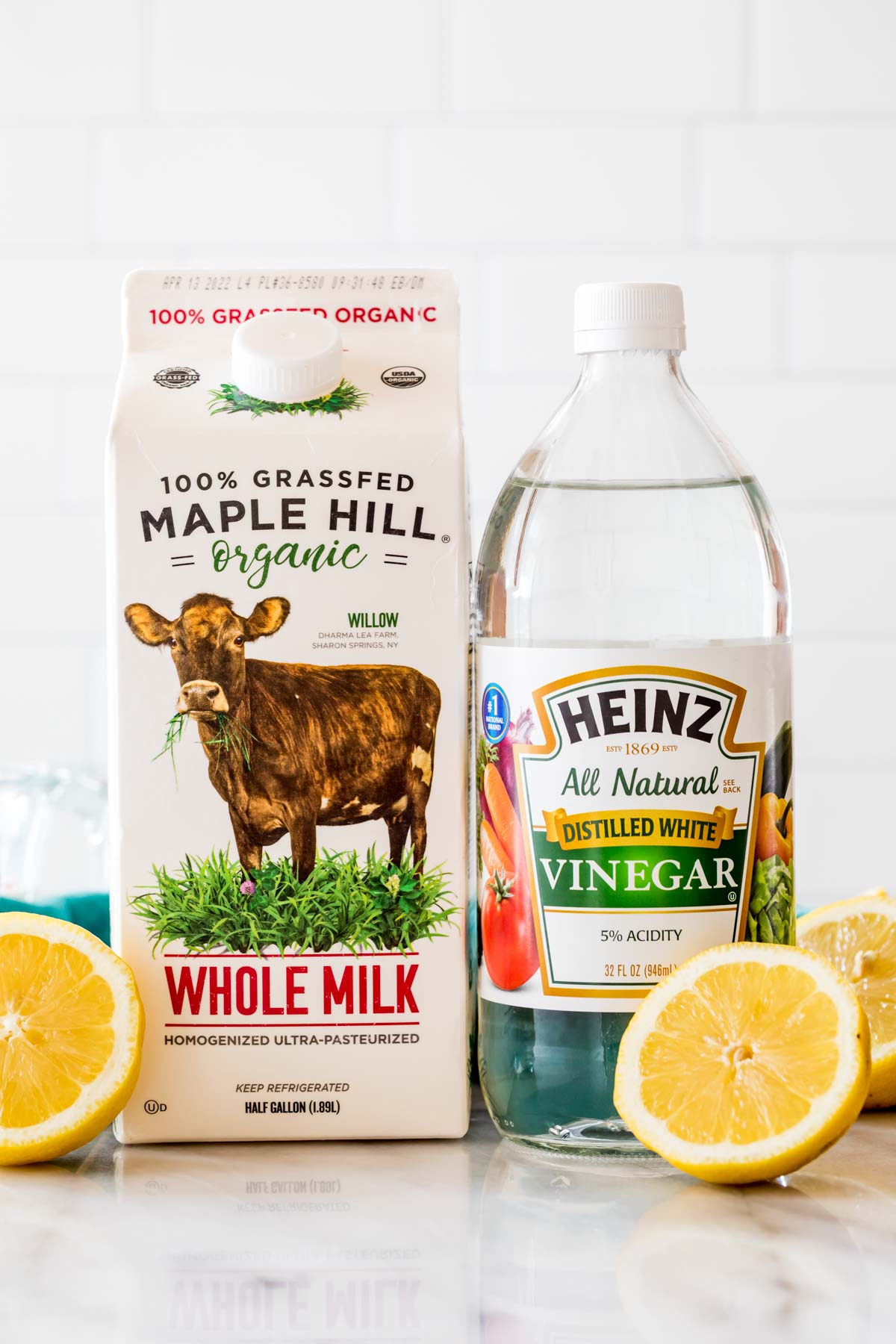
This quick and easy buttermilk substitute is incredibly simple, and my hope is that you have what you need at home already. Here’s what you need:
- Lemon juice OR vinegar. Fresh or bottled lemon juice OR distilled white vinegar will work equally well. Whichever you choose, this ingredient is the acid that will change your milk into buttermilk. Having trouble deciding between the two? Don’t think too much about it–you really won’t taste either ingredient in your end result, so just use whatever you have on hand!
- Milk. If you’ve ever used store-bought buttermilk, then you know it’s pretty thick. To get this quick and easy substitute as close to the consistency of the real thing, I recommend using whole milk or even heavy cream. If all you have on hand is 2% milk, that will work–thinner buttermilk is still better than nothing. And yes, non-dairy milks work just fine too!
SAM’S TIP: While I haven’t tried these myself, here are a few other substitutes that should work well for replacing one cup of buttermilk: 1 cup of plain yogurt; ¾ cup sour cream (or full fat Greek yogurt) + ¼ cup water or milk; 1 ½ teaspoons cream of tartar + 1 cup milk; or buttermilk powder (follow package instructions).
Remember, this is just an overview of the ingredients I used and why. For the full recipe please scroll down to the bottom of the post!
How to Make My Easy Buttermilk Substitute
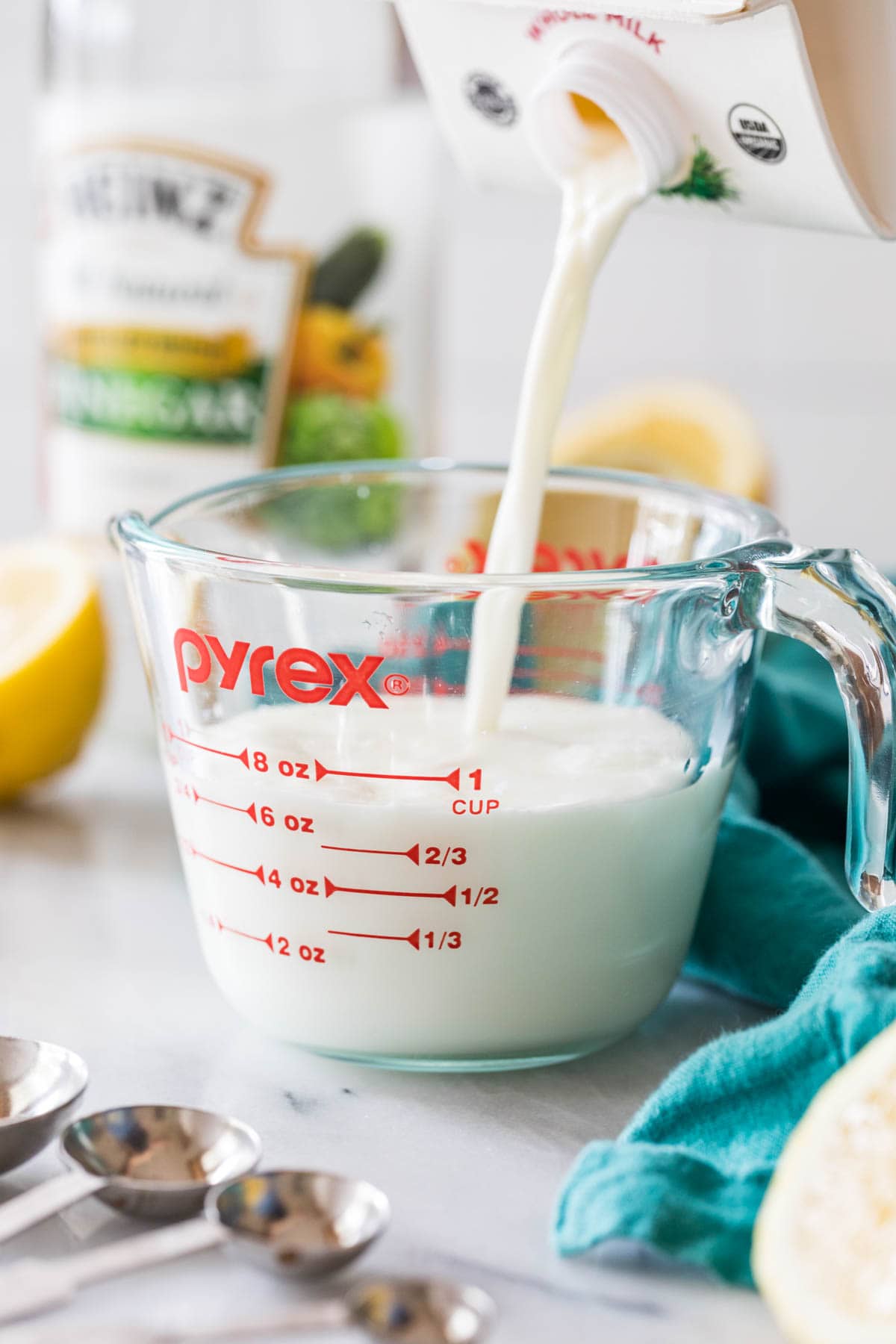
- Add one tablespoon of either vinegar or lemon juice to a liquid measuring cup.
- Add milk until you reach 1 cup of liquid.
- Stir together. The mixture may curdle; do not stress if this happens–this is a good thing!
- Use as needed.
SAM’S TIP: Many buttermilk substitute recipes suggest you let the milk mixture sit for 5-10 minutes before using. This actually isn’t necessary, because once the milk and acid are combined, the acidification happens instantly! If you still feel better letting the mixture sit, you can just prepare your buttermilk substitute at the beginning of your recipe.
Today’s recipe is for a full cup of buttermilk and can easily be doubled. Here is a breakdown for recipes that require less than a cup of buttermilk:
- ¾ cup buttermilk = 2 ¼ teaspoons lemon juice/vinegar + milk to fill to ¾-cup line
- ⅔ cup buttermilk = 2 teaspoons lemon juice/vinegar + milk to fill to ⅔-cup line
- ½ cup buttermilk = 1 ½ teaspoon lemon juice/vinegar + milk to fill to ½-cup line
- ¼ cup buttermilk = ¾ teaspoon lemon juice/vinegar + milk to fill to ¼ cup line
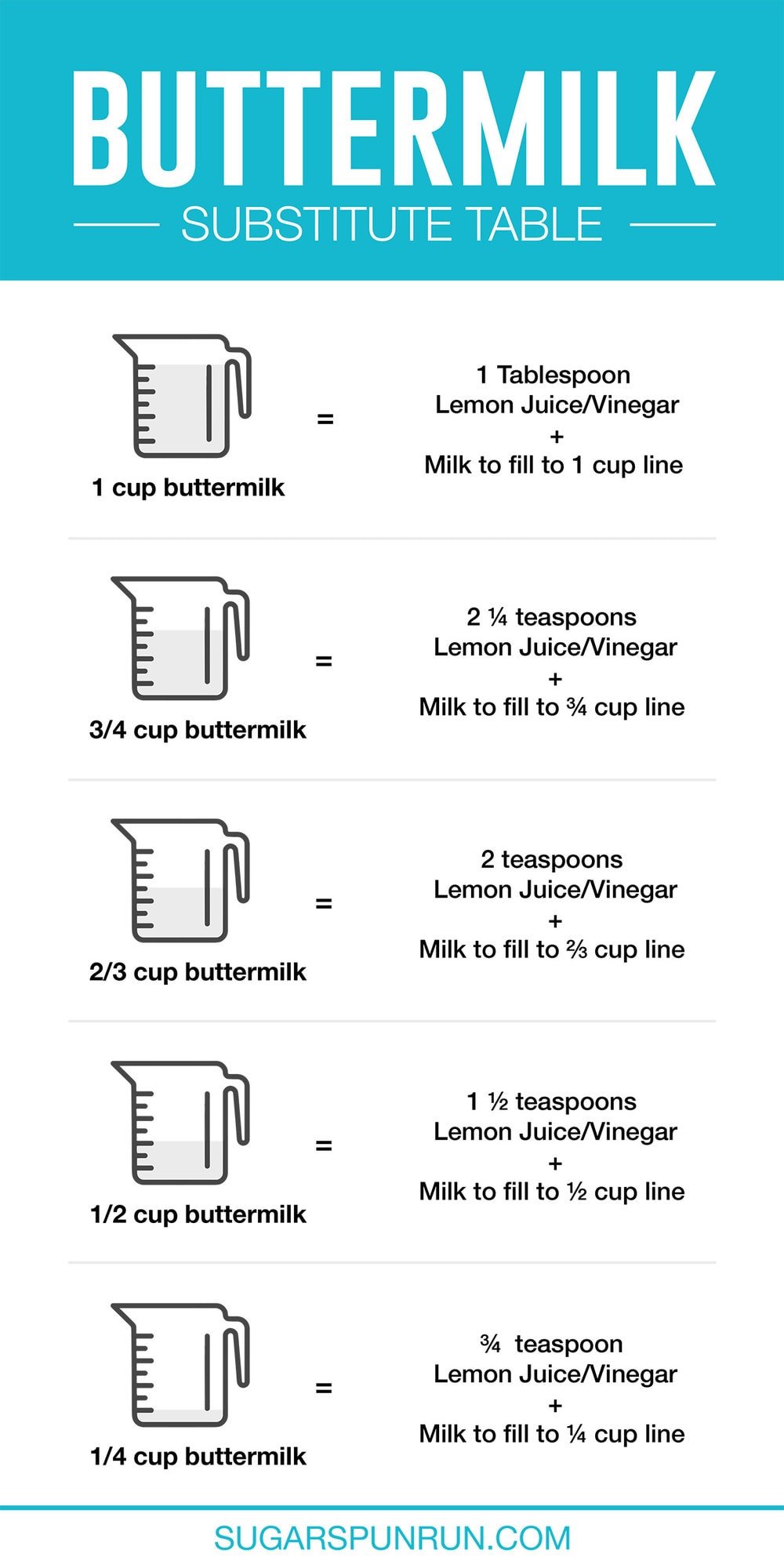
Frequently Asked Questions
No. Buttermilk is acidic, and any recipe that has been created using it is typically designed to have a specific reaction between the buttermilk (acid) and the leavening agents (usually baking soda). Note: sometimes I do use buttermilk without baking soda, like in my coffee cake and vanilla cake. In these instances it is to enhance the moisture and flavor of the recipe.
Regular milk isn’t acidic, which means the reaction won’t take place. Your baked goods may not rise properly and can turn out drier, less flavorful, and less tender if you use plain milk where buttermilk is called for.
Yes! You can use the ratio mentioned above with non-dairy milks, and you’ll still be left with a fantastic buttermilk substitute! I rarely bake with these milks, but this is a good vegan buttermilk substitute if you need one.
It should hold up about a week in a sealed container in your refrigerator. However, I recommend just making it as needed rather than making it in bulk in advance.
Generally I would not recommend it. While some recipes will fare well with this substitution (I often make my biscuits with buttermilk instead of the whole milk indicated), not all recipes will be as forgiving and it is best to use the type of milk called for.
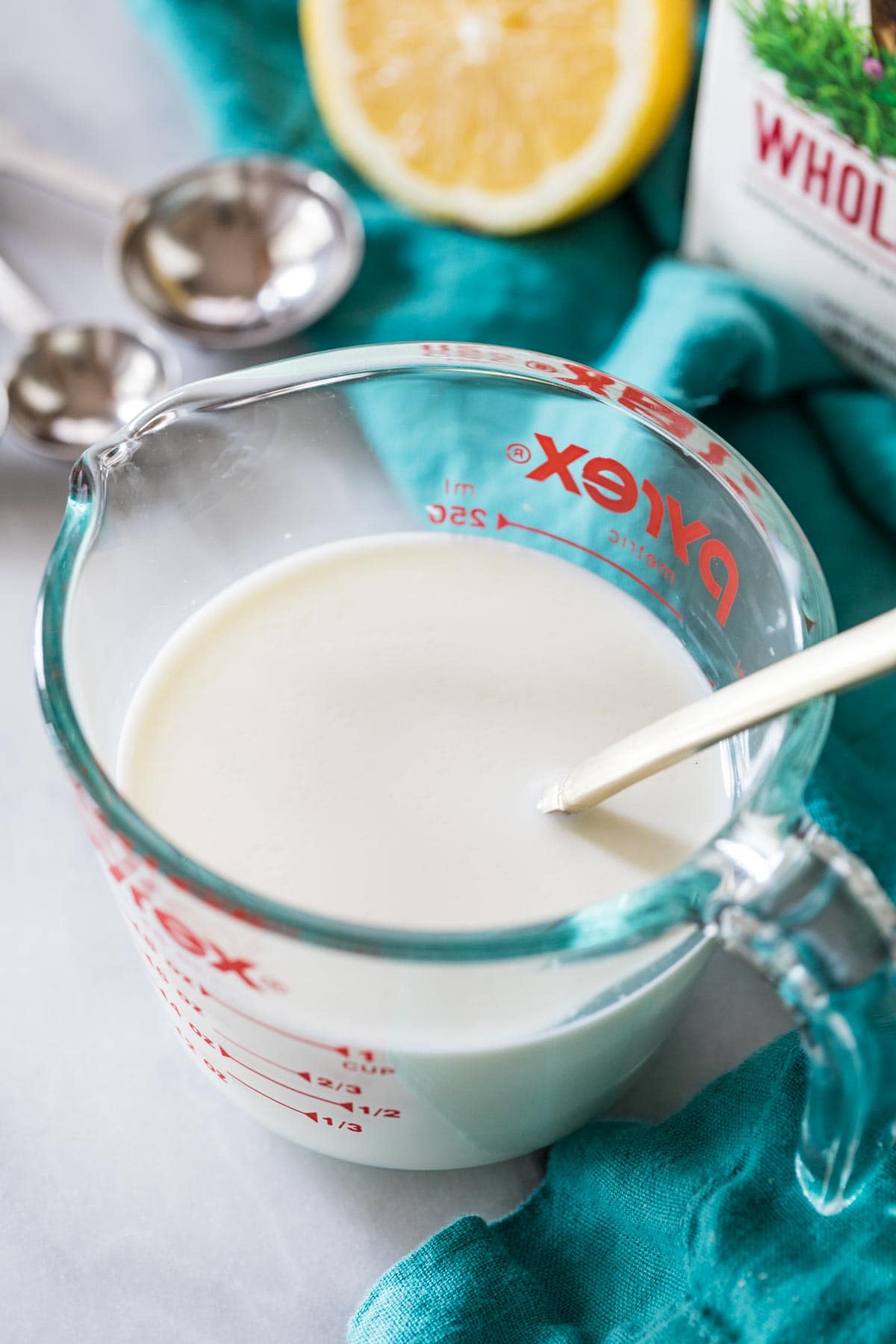
I know that this isn’t new information to many seasoned bakers, but I’m hoping that it will help someone out in a pinch.
Let’s bake together! I’ll be walking you through all the steps in my written recipe and video below! If you try this recipe, be sure to tag me on Instagram, and you can also find me on YouTube and Facebook
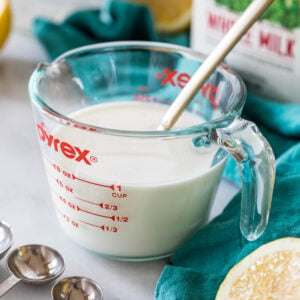
How to Make Buttermilk Substitute

Ingredients
- 1 Tablespoon lemon juice (fresh or bottled) may substitute 1 Tablespoon white distilled vinegar
- 1 scant cup* milk
Recommended Equipment
Instructions
- Pour one Tablespoon of lemon juice (or one tablespoon of vinegar) into a liquid measuring cup.1 Tablespoon lemon juice (fresh or bottled)
- Add milk until liquid reaches the 1-cup line (at eye level).1 scant cup* milk
- Stir. The milk will thicken a little and may appear to be slightly curdled or chunky.
- Use buttermilk in your recipe as instructed (note that this recipe yields a cup, please use only the amount called for in your recipe).
Notes
Nutrition
Nutritional information is based on third-party calculations and should be considered an estimate only. Actual nutritional content will vary based upon brands used, measuring methods, cooking method, portion sizes, and more.

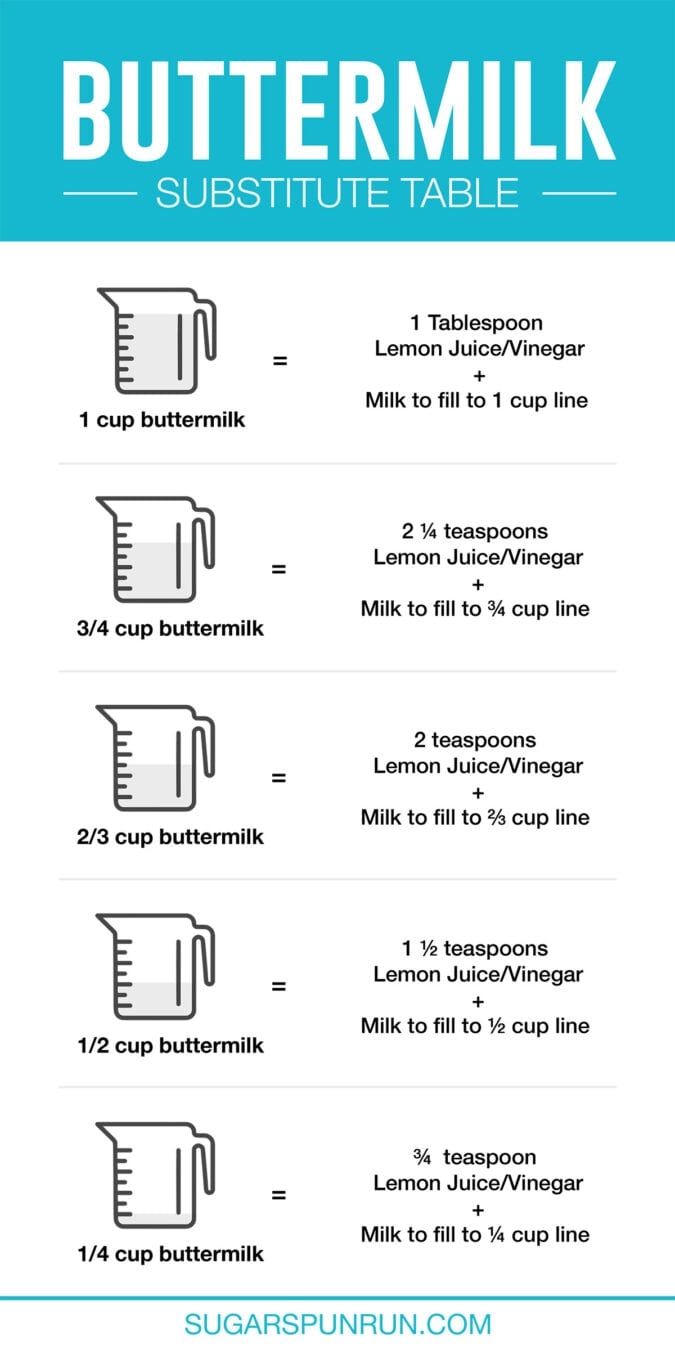
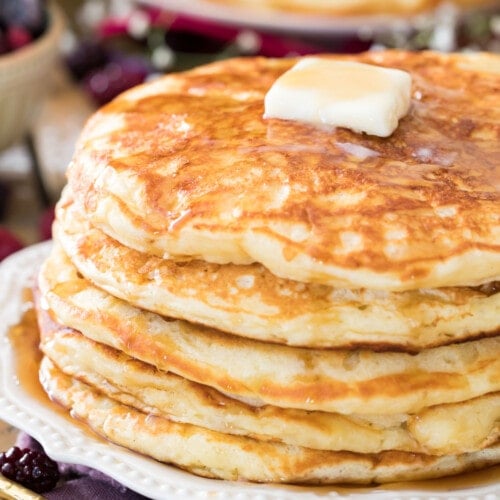
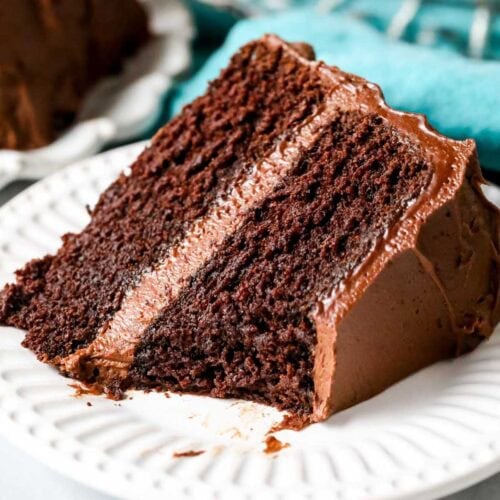
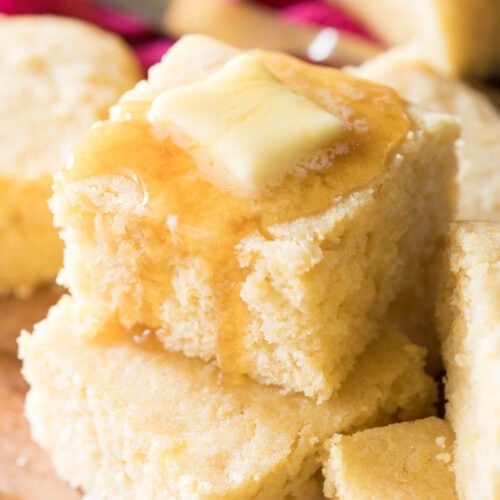
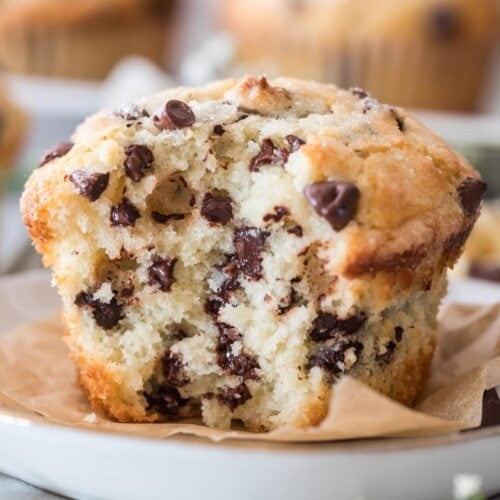
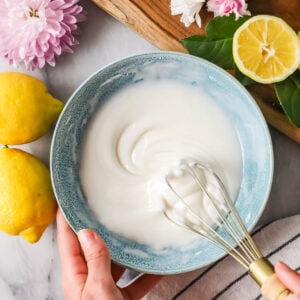
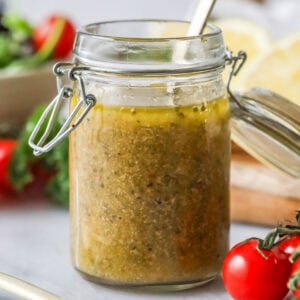
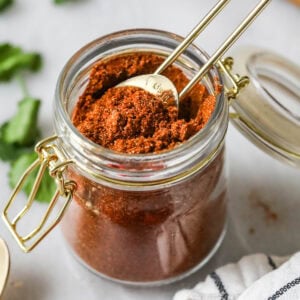

Vianne
Works perfectly!
TJ Andrezze
Thank you for the buttermilk alternative – Great job sharing recipes and ideas.
Abigail
I agree! I can’t tell you how many pints of buttermilk I have tossed after just needing a little bit for a recipe. This is a game changer! So thank you!
ARACELI
I love all your recipies! This buttermilk recipie is super easy, Thank you so much!
Carol
Works great – Thanks
Vivian
Another buttermilk question. Is low-fat buttermilk good to use in bluebbery lemon cake instead of buttermilk?
Sam
Hi Vivian! I think if that’s all I had on hand I would try it, but it wouldn’t be my preference if both were available. 🙂
Dave
This helped me tremendously!! THANK YOU!!
Katie
can you use this recipe to make butter milk pie?
Sam
Hi Katie! While you could, for something that uses actual buttermilk as the main ingredient, I would probalby use real buttermilk. 🙂
Karen
Great biscuit recipe.
Jo
I assume that because of the chemistry, this would only work with dairy milk. Any suggestions on if it would work similarly with something such as almond milk?
Emily @ Sugar Spun Run
Hi Jo! It works just fine. We actually address this in the post 😊
Patricia
I have used this recipe in vegan dishes with almond & oat milk and I found that the oat milk does better. But almond milk will work too. I would use only the plain unsweetened almond milk, as it won’t alter the taste of your recipe.
Jen
Hello there! I am making gobs for a fundraiser and have been asked to make orange creamsicle ones. Is there a way I can use a traditional gob recipe and sub out some of the ingredients?
Sam
Hi Jen! I’m sure you could, but without having tried it I’m not sure how it would be done.
Kim
Can you use fat free buttermilk?
Sam
Hi Kim! That’s a very tough question to answer. It’s really going to depend how the buttermilk is used in each particular recipe.
Marilou
Hi Sam! Can I use a evaporated milk? , because I have only fat free milk in my house!
Emily @ Sugar Spun Run
Hi Marilou! It will depend on the recipe that you are using the buttermilk for. It is best made using whole milk. 🙂
Patti
I’ve seen and done this many times, but with baking bread I’ve used a dry buttermilk powder. It gives you a ratio of powder to water to “make” buttermilk in the amounts needed. It tastes great in breads, but I’ve never tried it in any other recipes. Have you heard of this, or used it?
Sam
Hi Patti! I have seen buttermilk powder, but unfortunately I haven’t tried baking with it so I can’t say for sure how it would work.
Mary
Have you ever tried buttermilk powder and water as a substitute for buttermilk? Or would you mix the buttermilk powder with whole milk?
Emily @ Sugar Spun Run
Hi Mary! We recommend following the package instructions, which typically call for water instead of milk.
Morgan
hi, can i substitute sour cream for buttermilk in the vanilla cake recipe, i don’t trust myself to do this recipe and in my head sour cream resembles buttermilk more.
I read about having to “thin” the sour cream with a 1/4 cup of milk to a cup?
Sam
Hi Morgan! Unfortunately, I haven’t tried this myself. I think you would need to thin the sour cream a bit but I’m not sure how to go about doing it. If you try it let me know how it goes. 🙂
Emma
Hi,Sam,
Can I substitute buttermilk with greek yoghurt?
Sam
Hi Emma! The process for substituting greek yogurt is a little different and I haven’t tried it so I can’t really advise on exactly how to do it. 🙁